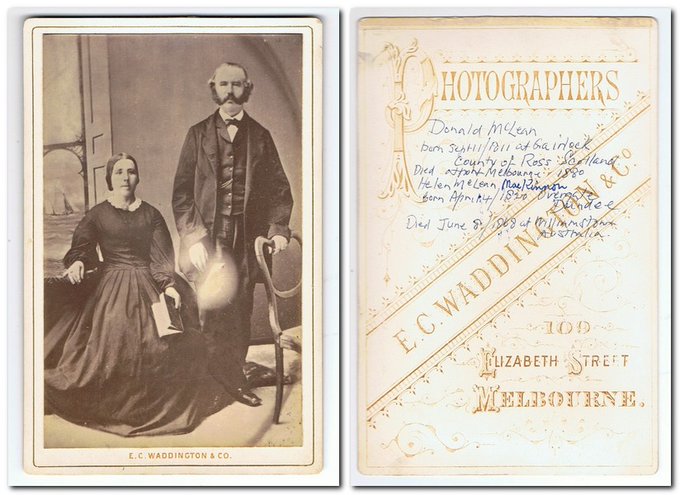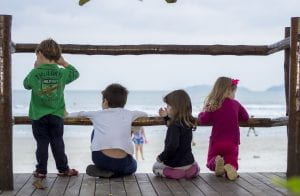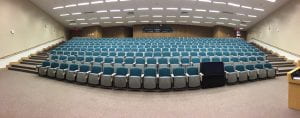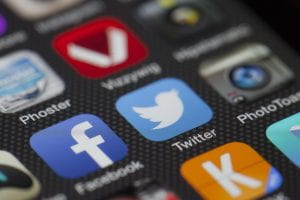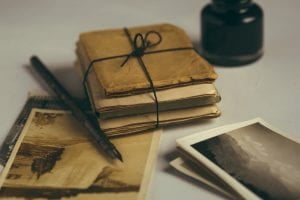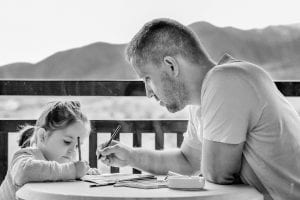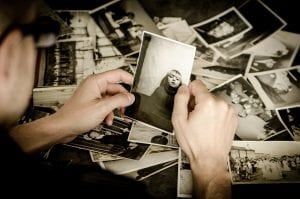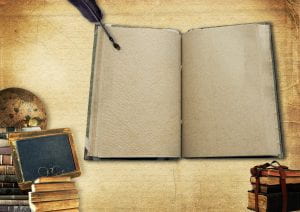Many comments on this topic were similar to those mentioned in our post on organizing your research and documents.
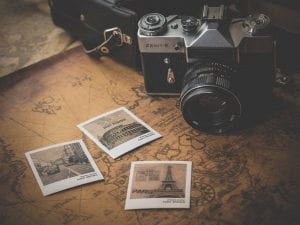
How do you currently store your family photos (traditional and digital)? Have you started sorting, organising and digitising them?
Save your photos as TIF files, not JPG. JPG is lossy, which means we do not get back the same quality we put in. There are more losses every time it is saved as JPG. TIF files are not lossy and much higher quality images.
I tried to do some TIFF scanning but it was so awkward with our scanner/software combo. JPG is more useful.
Check with your local library if you don’t have your own scanner. Many have good photocopier/scanners that you can use to scan photos and save to a memory stick or email to yourself.
Been sorting/ digitizing #photos for years! Identifying them is the challenge! Originals (not scanned) are in archival boxes, while scanned ones go to interested family. Scans, IF known, are in digital folders & cited in research notes! Liam
older family ones I’ve scanned & identified where possible. My own photos I’ve gone back & written names, dates and places on the back.
Someone contacted me on FB recently as she had a photo with my name on it – taken waaaay back in my late teens, with a group of mutual friends. Was fab to see,
I went thru my own photos from school/college & was ruthless. If I didn’t remember the people in it, I threw it out, unless it was a good pic of me! I’m very unphotogenic, so anything half-decent must be kept!
It was mad, I barely recognised myself! It was the top I was wearing that I remembered
I found some old pics in mum’s stuff recently, scanned and sent to the children I grew up with. They were thrilled as they didn’t have a family camera. Fun!
We’ve scanned my grandmother’s photo album – she has captioned them all, and include wedding photos of friends. Would be lovely to share them with their family.
Our Buchanan family was from Airdrie, but I think they left from Glasgow #ANZAncestryTime The album is so beautiful and I guess the family kept it safe to remember the relatives that they never saw again #Keepsakes
I have had such problems with the new(er) Photos – so irritating to use. The earlier version iPhoto was better. I found a whole heap of “lost” photos that hadn’t migrated from one to the other – was distraught thinking they had disappeared somehow.
I’m thinking of taking my photos from the Apple photos software. They hide them away so I find it easiest to copy any I want to use in blog posts or other applications. Then I have a mess of duplicates. For work I just file in Finder as it is easier.
Maggie, know what you mean. I preferred iPhoto as well. I had some trouble migrating that I add my back up to photos. Then some reappeared. Now I have to open each one and check for the most metadata and delete one. If you find an alternative, pass it on. Thanks.
I bought a FlipPal years ago but very rarely use it.
What can I say about my photos – NO! Physical photos stuck in albums and digital ones lumped in my computer. I do back up. I have scanned my Father in Law’s photo album and selected many for a photo book for his children. They loved it.
I love using photobooks both for family and events but also family history. Who knows what will survive.
We do Christmas photoletters (like a comic strip format) and these are wonderful to look back on. I think the photobooks would be the same – and more likely to survive, hopefully.
Try to use a common naming pattern when saving digitally but otherwise they are in a box labelled Family Photos
I am trying to label every photo and document consistently. For example, Surname_firstname_event/place_year. Any other examples?
I use surname first name year then event as it keeps photos in timeline order for that person
My method too or almost :)) Surname_first nameYear_event_place if known. For group photos add the names descriptions in metadata or use a simple program like Paint to add white canvas to picture and put all the information there
Have some in Flickr albums flickr.com/gp/crg_flickr/… some in shared Google photo albums depending on where families lurk.
I’m saving some in offline programs like Google Photos…in case. I have a Flickr account but don’t use it anymore.
I have finally transferred almost all of my iphone photos to my computer. I have started using the Forever storage that I paid for at Rootstech a while ago but it takes time! That’s the plan
Well I do wonder why I’m bothering as there is nobody coming after me to take them on. Might just be better off to put them up on Flickr. Haven’t decided what to do yet
FastStone Image Viewer. Before that Picasa, which was very good and easy to caption
I started archiving our digital photos years ago. Have left a set of DVD data discs at my parents house as a backup. Whenever I visit family I’ll scan whatever I can get my hands on. Physical photo archiving still to do. File/folder naming important.
Did anyone else fall into the trap of buying tow of each copy when you had photos developed? Meaning to send them to relatives and then never doing it? I have way too many photos. It seems a daunting task
Purchased some archival folders and sleeves from @GouldGenealogy and as I digitised wrote on back in pencil, and added the photos – 2 albums for my side of family, 1 for husband’s side, photos with metadata in surname folders
My father has all our family photos and every now and then he scans some and sends to me. Especially if they relate to a blog post. He is super organized with hundreds of photo files on his computer
One thing I do as I’m scanning is write the names on each photo but anything I scan I write an S on it so I know it’s been scanned
everywhere – albums, my computer, my phone, Google photos – no organisation whatsoever
My family photos need some sorting. So many in old albums and dare I say shoe boxes!
I have mine backed up on an external hard drive, on Forever (well they are getting there) and on USB’s
Organised, moi? I think not. No, I save them in folders by event (travel), or family name and within that by generation. I do have way too many photos of my own. like Sharn I’m a shutterbug.
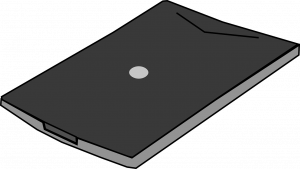
I have my mother’s photos – years ago I got her to get all negatives printed & photos into photo albums with labels – I’ve started scanning some of them & use them on my family history blogs – but still long way to finish scanning – I keep getting sidetracked
I haven’t had a play with Adobe Bridge yet (I’m on a Windows laptop). I’m curious about what else is out there. I was thinking of re-importing pic files from 1 drive to another because the photo import apps have some bulk naming capabilities.
I have many albums of my own family photos and boxes of loose ones. I think I overdid it when photographing my children, holidays etc. I probably need to get rid of some
I find digital images are the hardest to control. They proliferate and it’s too easy to ignore managing them. When I do them I categorise the same ways I do with traditional pics.
They are saved in surname files eg maiden name till married then under married name for women
I have them saved on flickr as well as on home computer and many in Google photos but they are harder to add to blog posts.
I have scanned the old albums and they are on my computer. The originals are in my safe. I will give them to my nephew. I have suggested he should install a larger safe (as he has inherited from several people) in his renovations. Then he will get mine.
I’m afraid the trad photos are in boxes & old albums. Digital photos are roughly grouped into family lines. I give myself a C, definite room for improvement.
Digitally – I save them in specific family folders on my hard drive and backed up on my portable hard drive.
Traditional photos have been in albums but as I scan them I’m storing them separately and dividing into people and places. My favourite slides have been digitised, stored and backed up.
My family photos are a project to do still. I have digitised Many of my old ones but not my own family photos. Some are uploaded to Forever but I have boxes and boxes of photos that need attending to.
While on Covid leave for 12 months I digitised all photos. But that’s all I’ve done.
It’s one of the next jobs on my list, but so far I haven’t started 🙂
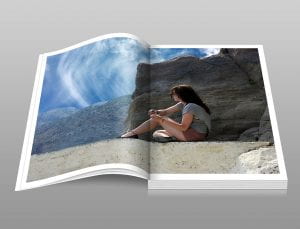
Do you have a plan or any tips for organising and preserving family photos into the future?
Hoping that many unknown #photographs can be identified, then grouped within the family units. @Photomyne has proven very helpful copying pictures trapped in (too many!) glue-striped, cling film albums that were popular in the 70s-80s
I recently got sent some photos from mum’s oldest friend’s family. Even included a photo of my parents’ house when first built. Best of all, they all have info on the back incl my baby photos.
Excellent, one of my sisters friends had a photo of her mother as a nurse holding me at a few days old outside the hospital where I was born.
The main thing I do to ensure my photos survive is put them into blog posts. My blog is archived so I’m hoping somebody comes across them in future years.
Photos from our trips (remember those 😒) go into photo books from Snapfish. Otherwise they just get forgotten about on a hard drive somewhere. #ANZAncestryTime Could do something similar for the family history photos.
I also organise all my digital photos (travel – family) in folders by date & event – I transfer photos from my Android phone to these folders. I also keep camera sd cards. I accidentally deleted some pics from my hard drive but found them on sd card
i inherited a bundle of photos of Perth, taken by my grandfather in the 1950s. I got in touch with the WA State Library & they said they’d be interested in taking them. As you say Pauleen, they do reveal many changes.
I use as many old family photos as I can to illustrate blog posts. And I make photo books. That way they are hopefully preserved for some time to come
My files on my computer of digital photos are organised. It is the boxes of photos that need sorting and scanning that is my problem
I do plan to sort first & actually discard some old photos. Scan. Then put them in archival albums. I have so many of my grandmothers’ photos.
A great tip I got at a writing seminar (for research docs, but works just as well for photos) is to put words in the file name that you would search for & let the computer’s search engine do the rest. So if its a group photo put many names in, etc.
I want to recaption my family photos – these date back to the 19th century. My own digital photos from 2005 have yet to be gone through to see which should be kept. Then I have the many boxes of slides from the 1960s to 1990s to scan plus the colour negatives
My parents and I had lots of old family photos scanned professionally, which has been fantastic, so they’re preserved in case anything happens to the originals. Plus easier to share with wider family. Haven’t got to the organising part, though.
A key preservation strategy is to share photos with others, especially heritage photos, present them in an appealing way, and keep backup copies off site where possible.
My fear is that in the coming decades we will lose a lot of history from our digital photos. I used photobooks for particular activities but that’s ironic -preserving digital in traditional ways.
Hoping that this #tweetchat will inspire me to get organised. Just realised the images on my computer are in an even bigger mess as I started filing them a while back so need to figure out where I am presently, create measurable goals, etc.
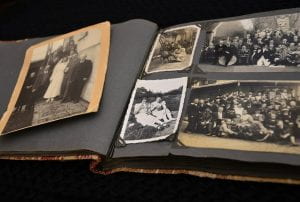
Share where you have found the best advice about organising, storing and preserving family photos ie books, conferences, courses, websites
A3 I’ve been given a photo album brought out with the Buchanan family when they emigrated from Scotland to Australia. There are no names on any of the photos circa 1880. Any ideas how to begin working out who the people are? #ANZAncestryTime pic.twitter.com/hZ563UcJHD
— Annie 🌻 (@ancestry_girl) October 19, 2021
The photography studio will at least you give you a place to start from and date range when they were in business. Perhaps then post on local area history site/society?Perhaps back in Scotland where they originated – family history groups or facebook groups, or maybe they were families who came out together to Australia, so check where they settled here
Do you have access to the records of people leaving from Glasgow? If you can search for Buchanan and see if any families come close to the ages or age differences of the people in the photos…. Good luck!!
#ANZAncestryTime A3 I have found the workshops on https://t.co/Q8nA2bn4Kl very helpful
— alex daw (@luvviealex) October 19, 2021
Contact Sunshine Coast Libraries they probably would digitise them, Noosa has done that for folks up here, borrowed old photos from locals and added them heritage.noosa.qld.gov.au anyone can login and add
Yes they have a promotional collection online that they gave us access to for the Waves in Time conference so they will probably be happy to add to the collection. Also I have heard they are working on an archive/
My best advice has always come from attending RootsTech. Though I have been tempted to employ The Filing Fairy who I met after speaking at the Botany bay FHS
About 10-15 years ago I came across a book Keeping Found Things Found – booktopia.com.au/keeping-found-… – it really helped my organise my files professionally and then my family history
somewhat off-topic. So you preserve your images in archival quality storage as recommended by the experts? I confess I don’t though I do have some stored safely apart from that
The best advice for scanning and saving photos is invest in a good scanner. The scanner in your printer is likely to be not as clear as a dedicated scanner. I like Epson scanners. Save photos across multiple devices and mediums..
I am a bower bird when it comes to collecting ideas about this….no one site. Sometimes tips from other genies can be as helpful as other experts’.
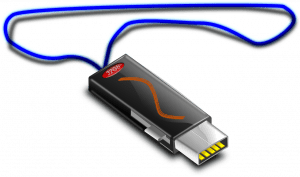
Suggest tips for maintaining family photos, ensuring image types remain current and preparing for disasters both digital and natural.
I started to write a blog post about my plans to preserve & digitise, but so many others have done that already. Q. What do you do with photos of friend’s weddings? A. Friends, keep an eye on your mailbox.
A great way to slim down your photo collection and give photos to those who would cherish them and pass them down in their own family!
For photos that are not my immediate family, I have sent them to cousins and friends of the family who I feel would treasure them more.
Regular backups: thumb drives, external drive, share originals (after scanning) to ensure an off-site copy. Upload to your website/blog: “Gramma took these vacation pictures; do you recognize any bunny?” Liam
I wonder how many of us have a disaster plan for our photographic archives? Bushfires, cyclones, storms, floods are real risks. When I lived in Darwin I was much more attentive to this.
It’s a good question. Grabbing the NAS hard drive is in our Bush Fire Survival Plan. It has everything backed up to it. Our most precious albums go into plastic crates during bush fire season.
Good strategies Greg. At least with cyclones there’s usually more notice and we kept plastic tubs for that purpose too.
I will give FOREVER another plug. For a one off payment I have a personal and business account. It’s just time I am short of!
I must tell you my family photos disaster: Egged on by my uber-organised-scrapbooker-sister I made an album of my first-born’s baby photos. Was quite proud of myself. I left it on the floor & the cat peed on it 😳
Scanning will save the information. I back up and store one PHD in the safe. I put photos on my WikiTree profiles. I had to add new photo corners to the oldest album and rethread the pages to hold them in place
Another of the great challenges for the future which is another reason I like including images in photobooks or blog posts. With thousands of images how do you ensure you keep the standards current let alone your inheritors.
Not really as I don’t have a huge lot of photos. House fire! Also digitised all paperwork. Was a relief to get it done
I don’t have many from my life growing up Jennifer. I lost them in the 1974 Brisbane floods, My mother lost hers in a house fire. For years I have had a selection of photos packed and ready to evacuate which we had to do several times for bushfires. I still have those boxes ready.
We have an emergency ‘run’ box too. Haven’t had to use it yet. But we are surrounded by heavy bush so it will happen one day. There was no warning for our house fire so even if we’d had it then it wouldn’t have been taken
My dad has been really good at getting copies of photos from cousins, or borrowing them and scanning. I’ve been lucky!
I wonder how many of us have a disaster plan for our photographic archives? Bushfires, cyclones, storms, floods are real risks. When I lived in Darwin I was much more attentive to this.
Our oldest photos
What’s the oldest photo you have? I think mine are these 1870s photos of Ralph Barclay & Jemima Grieg, my gggrandparents taken before they left Fife to emigrate to NZ #ANZAncestryTime pic.twitter.com/9XmRzCLAOg
— Brooke Wooldridge (@BrookeWooldy) October 19, 2021
https://t.co/eTX2eR6ZYw
A2 This is probably my oldest photo of my great grandmother who died aged 44 in 1905, so this is probably late 1890s. #ANZAncestryTime— Sue Wyatt (@tasteach) October 19, 2021
My great grandparents in Melbourne. Before June 1868 as that is when she died. The first in my grandmother’s album which went from Victoria to New Zealand. Most not named or dated, such a shame. #ANZAncestryTime
A3. My oldest pic shared with me by a cousin for a family history blog – poor quality c.1880 but it is the only one I have of my 2 x gt gdmother Mary Waters nee Robinson so very precious #ANZAncestryTime pic.twitter.com/nwAOjJMrY8
— KerrieAnne Christian (@SteelyGenes) October 19, 2021
Brooke gave lots of posts to help with looking after photos
Digitizing your family collection
Blog posts relating to photos
Marian: Those duplicates,
Carmel: Adding Flickr photos to Trove,
Brooke: Who is in the wedding photo?
Sue: Photo essay, using images,
Readers: How do you look after your family history photos?
